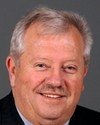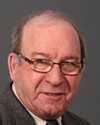Thank you, Mr. Chair, and thank you to the witnesses today.
I'm going to shift gears a little bit. I wanted to delve into energy conservation and the environment, but I think, given my time allotment today, I'll just focus on the environment. If we get enough time, I'll ask some questions about the other topic, energy and conservation.
I'm the MP for the great Kenora riding. We have a lot of similarities with the areas the committee has embarked on studying. Obviously, the southern end of my riding is along the Trans-Canada Highway, but we have communities on Hudson Bay and more than 25 first nations communities that are completely isolated, with no road access. So a number of the issues we're talking about here bear great similarity to our own. So I appreciate Dennis's questions earlier, as they resonate in my riding as well.
I want to focus on the impact of some of these infrastructure projects, particularly some of the larger-scale infrastructure projects. I know there can be challenges in any riding, but up north, and certainly in the territories and beyond, we know that the impact can even be greater in terms of the effects on the migration of animals, on hunting routes, and the like.
With respect to infrastructure, Mr. Sarantakis, perhaps you can comment on whether you're doing some work in a minimal-impact way and on whether that's become necessary. And if so, you could point to a few specific examples, and then I'll move the questioning from there.
Thank you.





